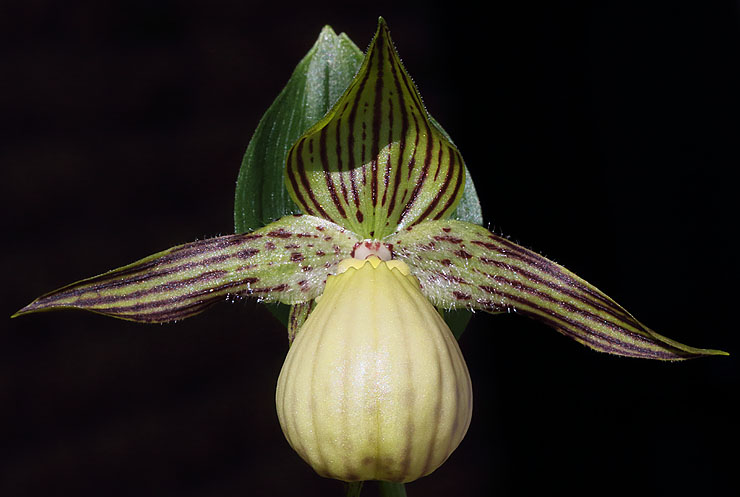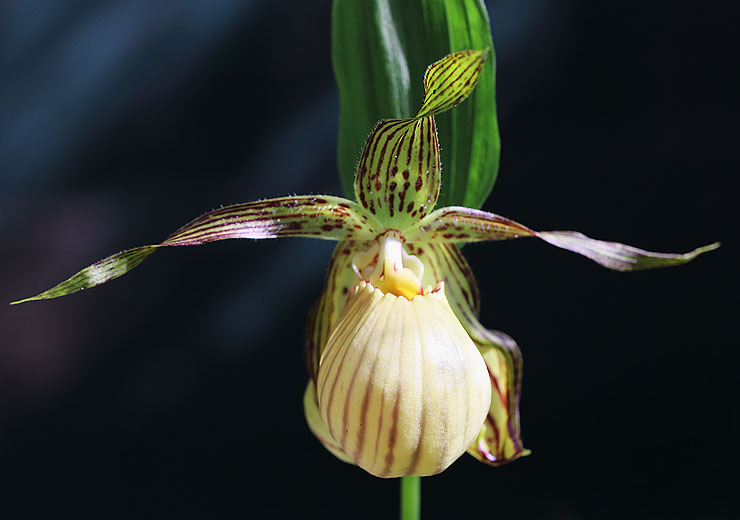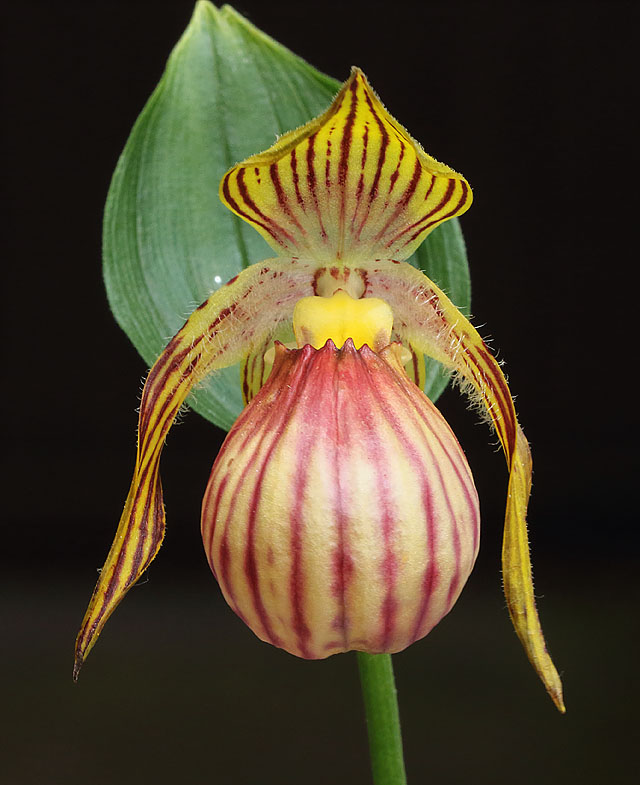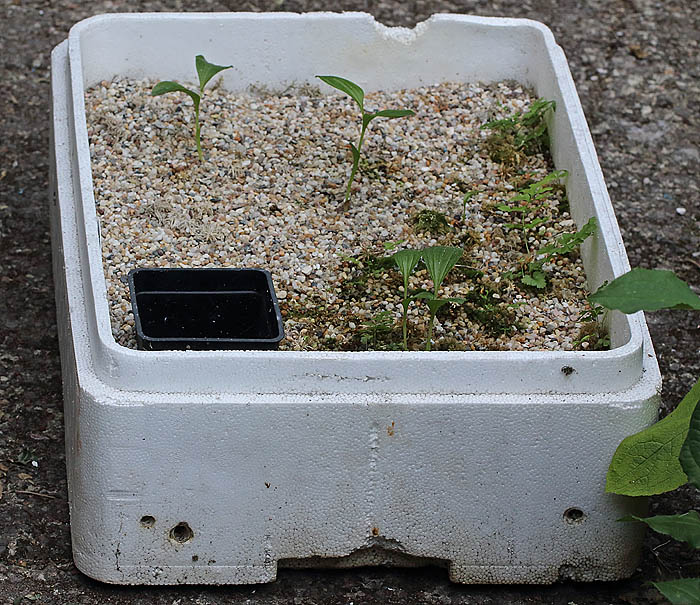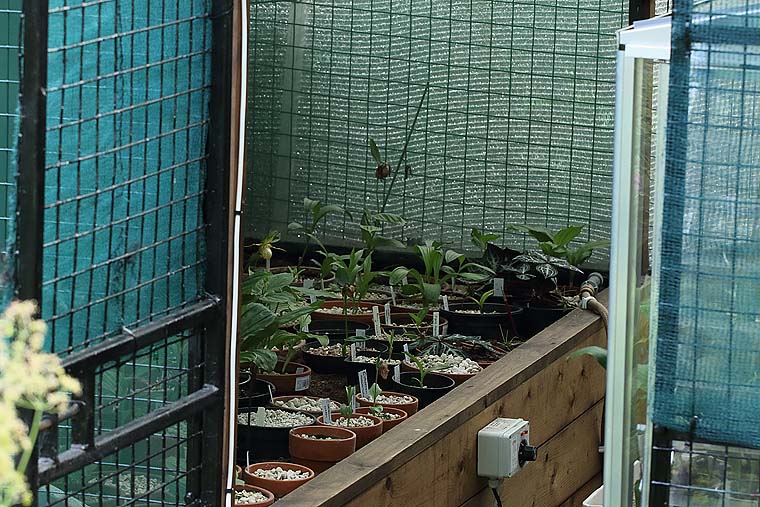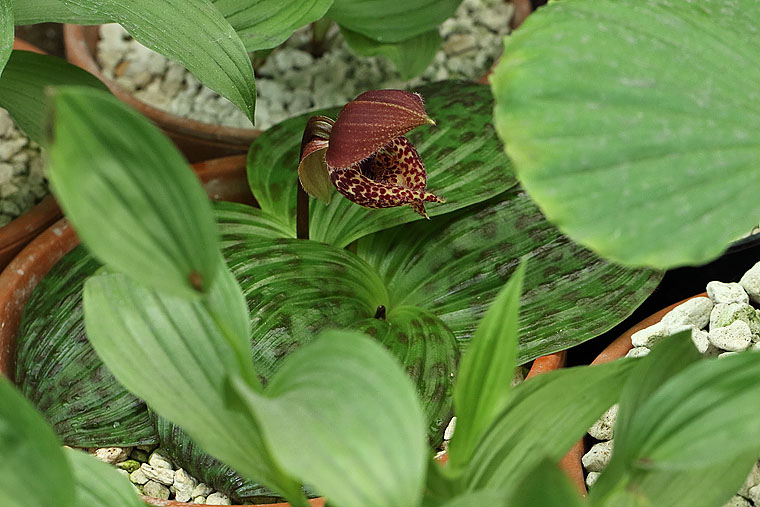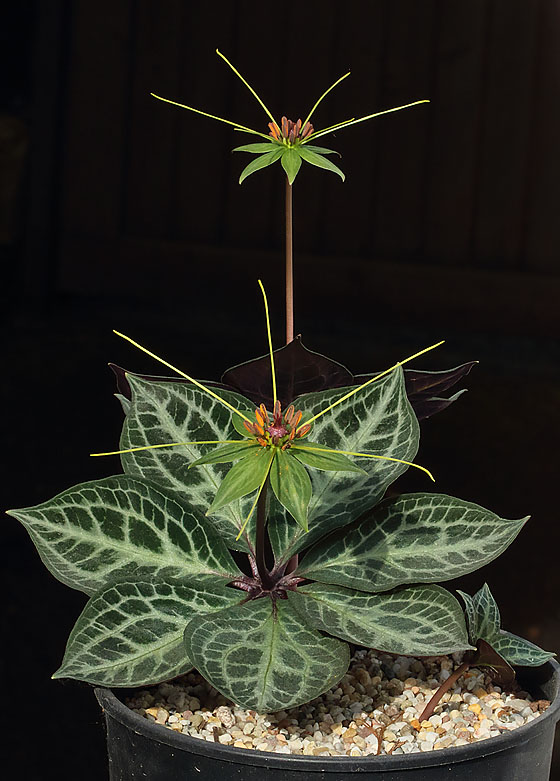Thanks.
To answer Abax, unfortunately there are no cypripedium native to Scotland.
Cypripedium farreri is a range-restricted montane species found in South-west China (Northern Yunnan, North-west Sichuan and southern Gansu).
I currently have three adult and four seedling farreri. The adults were bought from a German vendor but came originally from the late Holger Perner. The seedlings were bought from Jan Moors of Albiflora (Belgium) two years ago as de-flasked seedlings; I have had 100% survival. I believe that Jan still has some seedlings for sale.
Perhaps it is just beginner's luck but I have not found farreri to be too demanding. My adult plants are grown in pots (both clay and plastic) in a mix 1:1:1 of perlite/pumice(3-8mm)/cat litter with NO added organics. The cat litter is a proprietary brand which is made from baked moler clay granules -these granules are hard, about 5mm in diameter and are highly absorbent. The rooting mix is very free-draining but quite moisture retentive and with a high air-filled porosity: this drastically reduces the risk of root/rhizome rot. The pots sit in a sand-filled plunge bed which is kept permanently moist. This is a raised bed which has a polycarbonate roof shaded with Aluminet and netted sides for ventilation. I water with rainwater and feed about every 10 days with Akernes Rain mix (based loosely on the Michigan State University fertiliser). I also water twice per year with a proprietary trace elements mix at half-strength. The seedlings grow in a polystyrene box -the substrate being very coarse-grade silica sand with some chopped living sphagnum moss. The polystyrene box has drainage holes about 2cm above the inner base so there is always a "moisture reservoir" which helps prevent the substrate from drying out. The damp sand-sphagnum mix facilitates evaporative cooling and keeps a buoyant humidity.
I find farreri to be easier to grow than some of the macranthum group or the Chinese spot-leaved species such as fargesii, sichuanense or lichiangense.
